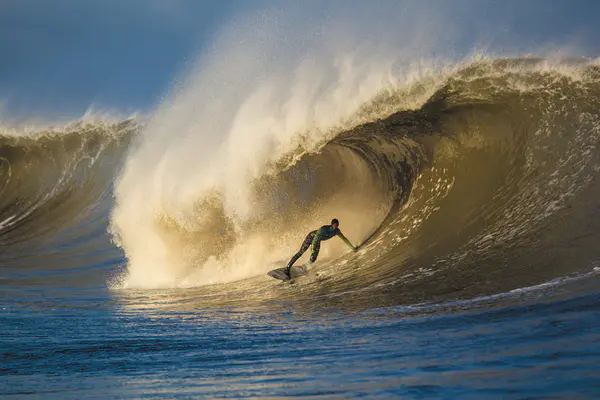El Niño is a term that surfers and meteorologists alike discuss with great interest. Understanding its impact is crucial for those who love the waves. This article will explore how El Niño affects surfing, including its effects on wave patterns, storm activity, and overall surf conditions.
What is El Niño?
El Niño is a climate phenomenon characterized by the warming of sea surface temperatures in the central and eastern equatorial Pacific Ocean. It is part of a larger climate pattern known as the El Niño-Southern Oscillation (ENSO), which also includes La Niña, the cooler counterpart.
The Science Behind El Niño
To understand its effects on surfing, it’s important to know how El Niño works. During El Niño, warm water spreads across the Pacific Ocean. This disrupts normal weather patterns and can cause significant changes in global weather.
Impact on Wave Patterns
- Wave Size and Frequency: El Niño can cause an increase in wave size and frequency. This is because the warmer ocean temperatures can influence storm activity. Stronger storms can generate bigger swells.
- Swells and Surf Breaks: Different surf breaks can experience changes in swell direction and intensity. For instance, west coast breaks in the United States might see more consistent and larger waves.
Effect on Storm Activity
- Increased Storm Frequency: El Niño often leads to increased storm activity in the Pacific. More storms mean more swell generation and potentially more impressive surf conditions.
- Storm Path Changes: The path of storms can shift during El Niño. This can lead to changes in the usual surf patterns, bringing waves to regions that don’t usually see them.
Regional Surfing Implications
- North America: In the United States, the west coast can see larger and more frequent swells. Hawaii might experience more consistent waves. However, the east coast might have calmer conditions.
- Australia: Australia’s east coast can benefit from more powerful swells during El Niño. However, the west coast might experience less favorable conditions.
- South America: Countries like Peru and Ecuador may see an increase in wave size and frequency. This can enhance surfing conditions but also increase the risk of dangerous waves.
El Niño and Surfing Competitions
- Opportunity for Competitors: Bigger and more challenging waves can create exciting conditions for professional surfers. Competitions may see higher performances and more thrilling heats.
- Safety Considerations: Increased wave sizes can also mean higher risks. Surfers need to be aware of their limits and prioritize safety.
Long-term Effects of El Niño
- Wave Patterns Over Time: El Niño events can alter wave patterns for several months. Surfers need to adapt to changing conditions.
- Impact on Surf Culture: The surf culture may evolve based on the opportunities and challenges presented by El Niño. Surf schools and enthusiasts might adjust their practices.
See Also: What Is a Kook in Surfing Terms
Preparing for El Niño
- Research and Forecasting: Staying updated with weather forecasts and surf reports is crucial. Surfing apps and websites can provide valuable information.
- Equipment and Skills: Surfers might need different equipment to handle larger waves. Training and skill development are also essential to stay safe and perform well.
Conclusion
El Niño significantly impacts surfing by changing wave patterns, increasing storm activity, and altering regional surf conditions. Surfers who understand these effects can better prepare for the challenges and opportunities presented by this climate phenomenon. Whether you’re a seasoned pro or a weekend warrior, being informed about El Niño can enhance your surfing experience and keep you safe in the water.
FAQ: What Does El Niño Mean for Surfing?
El Niño is a natural phenomenon that occurs in the Pacific Ocean, characterized by unusually warm water temperatures. This can have a significant impact on surfing conditions around the world. Here are some frequently asked questions about what El Niño means for surfing:
Q: How does El Niño affect wave conditions?
A: During an El Niño event, the trade winds tend to weaken or reverse direction, which can lead to smaller waves and less consistent surf. However, certain areas may experience larger waves due to changes in wind patterns and ocean currents.
Q: Which regions are most affected by El Niño?
A: The impact of El Niño varies depending on the region. In general, areas that rely on trade winds for waves, such as Hawaii and Indonesia, may see smaller waves and less consistent surf. On the other hand, regions like Southern California and South America may experience larger waves due to increased storm activity.
Q: Is El Niño always bad for surfing?
A: Not necessarily. While certain areas may experience less favorable conditions during an El Niño event, other regions may benefit from larger waves and improved surfing conditions. It ultimately depends on the specific location and how the weather patterns are affected.
Q: How long do El Niño events last?
A: The duration of an El Niño event can vary, typically lasting from several months to up to two years. It’s important for surfers to stay informed about current weather patterns and forecasts to make the most of any changes in wave conditions.
Q: Can I still go surfing during an El Niño event?
A: Yes, you can still enjoy surfing during an El Niño event, but it may require adjusting your expectations and exploring different locations or types of waves. It’s also important to prioritize safety and be aware of any potential hazards related to changing weather patterns.

